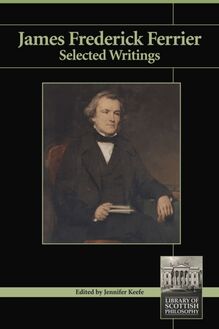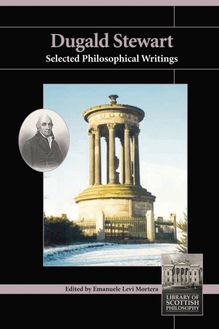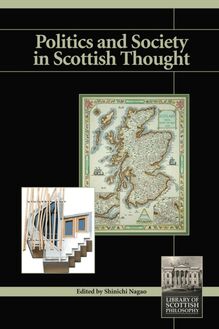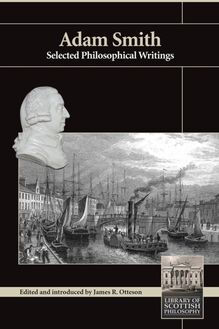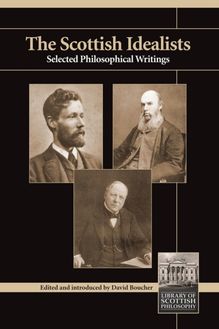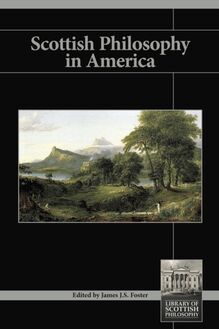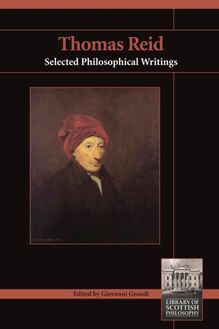-
 Univers
Univers
-
 Ebooks
Ebooks
-
 Livres audio
Livres audio
-
 Presse
Presse
-
 Podcasts
Podcasts
-
 BD
BD
-
 Documents
Documents
-
- Cours
- Révisions
- Ressources pédagogiques
- Sciences de l’éducation
- Manuels scolaires
- Langues
- Travaux de classe
- Annales de BEP
- Etudes supérieures
- Maternelle et primaire
- Fiches de lecture
- Orientation scolaire
- Méthodologie
- Corrigés de devoir
- Annales d’examens et concours
- Annales du bac
- Annales du brevet
- Rapports de stage
La lecture à portée de main
Vous pourrez modifier la taille du texte de cet ouvrage
Découvre YouScribe en t'inscrivant gratuitement
Je m'inscrisDécouvre YouScribe en t'inscrivant gratuitement
Je m'inscrisEn savoir plus
Vous pourrez modifier la taille du texte de cet ouvrage
En savoir plus

Description
Sujets
Informations
| Publié par | Andrews UK |
| Date de parution | 03 octobre 2012 |
| Nombre de lectures | 0 |
| EAN13 | 9781845404444 |
| Langue | English |
Informations légales : prix de location à la page 0,0550€. Cette information est donnée uniquement à titre indicatif conformément à la législation en vigueur.
Extrait
Title page
Art and Enlightenment
Scottish Aesthetics in the Eighteenth Century
Edited and Introduced
by Jonathan Friday
Copyright page
Copyright © Jonathan Friday, 2004
The moral rights of the author have been asserted.
No part of any contribution may be reproduced in any form without permission, except for the quotation of brief passages in criticism and discussion.
Originally published in the UK by Imprint Academic
PO Box 200, Exeter EX5 5YX, UK
Originally published in the USA by Imprint Academic
Philosophy Documentation Center
PO Box 7147, Charlottesville, VA 22906-7147, USA
2012 digital version by Andrews UK Limited
www.andrewsuk.com
Series Editor’s Note
The principal purpose of volumes in this series is not to provide scholars with accurate editions, but to make the writings of Scottish philosophers accessible to a new generation of modern readers. In accordance with this purpose, certain changes have been made to the original texts: Spelling and punctuation have been modernized. In some cases, the selected passages have been given new titles. Some original footnotes and references have not been included. Some extracts have been shortened from their original length. Quotations from Greek have been transliterated, and passages in foreign languages translated, or omitted altogether.
Care has been taken to ensure that in no instance do these amendments truncate the argument or alter the meaning intended by the original author. For readers who want to consult the original texts, full bibliographical details are provided for each extract.
The Library of Scottish Philosophy was launched at the Third International Reid Symposium on Scottish Philosophy in July 2004 with an initial six volumes. Attractively produced and competitively priced, these appeared just fifteen months after the original suggestion of such a series. This remarkable achievement owes a great deal to the work and commitment of the editors of the individual volumes, but it was only possible because of the enthusiasm of the publisher, Keith Sutherland, and the outstanding work of Jon M.H. Cameron, Editorial and Administrative Assistant to the Centre for the Study of Scottish Philosophy.
Acknowledgements
Grateful acknowledgement is made to the Carnegie Trust for the Universities of Scotland for generous financial support for the Library of Scottish Philosophy in general, and to Mr George Stevenson for a subvention for this volume in particular.
Acknowledgement is also made to the University of Aberdeen Special Libraries and Collections for permission to reproduce the engraving of the Edinburgh Faculty of Advocates from Modern Athens (1829).
Gordon Graham, Aberdeen, June 2004
Introduction
There is something anachronistic about referring to the contents of this book as concerned with aesthetics in eighteenth-century Scotland. For although the term was coined in the eighteenth century—derived from the ancient Greek word aestheticos , meaning that which pertains to sense perception—it did not come into widespread use in Britain as the name for a particular approach to the philosophy of art until the 1830s. However if we disconnect the particular history of the concept of the aesthetic from what the term has come to mean, there is an important sense in which aesthetics as a subject of philosophical inquiry has its origins in eighteenth-century Britain, and in particular Scotland. Whenever claims such as this are made about the origins of a subject of study, particularly in the context of enlightenment Europe, care must be taken to remember that intellectual history is far too complex to allow for neat identifications of national origin. Many of the thinkers whose work is collected in this volume saw themselves as involved in a debate that extended well beyond the Scottish or British national boundaries, and all took inspiration from the continent, and in particular French thinkers. At the end of the eighteenth century we do find Dugald Stewart expressing a certain patriotic pride in the achievements of Scottish philosophy and learning, and indeed drawing a contrast between the empiricism and inductivism of British philosophy and the rationalist traditions of continental Europe. Nevertheless, the enlightenment ideal of a trans-national ‘republic of ideas’ to which the learned belong and contribute has a far more important role in the period than narrow national concerns.
In the light of such doubts about the suitability of applying the word ‘aesthetics’ to the great discourse about taste, beauty and the imagination that occurred in eighteenth-century Scotland, and about identifying the study of such subjects in terms of national boundaries, what does it mean to say that modern aesthetics has its origins in eighteenth-century Scotland? If we try to distil some shared general characteristics from the many kinds of distinctively aesthetic theories from the past and present, one of them would be that aesthetics is concerned with a broad category of human experience. For the modern philosopher this typically means trying to understand art and its value through reflection upon the nature of experience of art. Much of our ordinary experience of the world is evaluatively neutral, but our experience of art usually has an evaluative quality in the sense that we respond with pleasure or dislike, interest or boredom, attention or repulsion. Our experience of art is like this, but so too are many experiences of the natural and built environment, and so we speak of there being an aesthetics of each of these. But just as familiar are other contemporary extensions of the range of aesthetic experience beyond that of art and the environment to the various objects that make up what is sometimes called ‘mass culture’. In this extended sense, aesthetics is concerned with understanding the nature and value of certain objects through consideration of a distinctive kind of appreciative and evaluative experience of them, and those of their properties that are important to appreciation. In the eighteenth century this experience was thought to be produced by a mental faculty called ‘taste’, and the contents of this experience were qualities like beauty, sublimity, novelty and wit. Indeed, these qualities were typically identified with particular sentiments aroused by experience of objects possessing them. Art and nature were certainly thought of as paradigm possessor’s of these qualities, but in general eighteenth-century philosophers of taste conceived of their investigations into the operations of taste and the experience it gives rise to as extending well beyond art and nature. What we now call aesthetic experience was understood in the enlightenment to be a pervasive and important force in the daily lives of educated human beings. This understanding of the extensive scope of aesthetic experience is one of the connections between the position of those author’s gathered together in this collection, and the contemporary belief in a wide application of aesthetic reflection.
It is true that another general characteristic of aesthetic theories that can be extracted from traditional and contemporary versions of such theories is that aesthetic experience is ‘disinterested’ in some sense or other. The notion of disinterestedness is nicely captured by the familiar expressions ‘an interest in a work of art for its own sake’ or as ‘an end in itself’. In effect aesthetic experience is supposed to be a distinctive kind of unself-motivated contemplative attention to an object merely for what it offers imagination and the emotions. The way I have characterised disinterestedness conceives of it as a property of aesthetic experience that would not have been recognised by the philosophers of the Scottish enlightenment. Indeed, my characterisation owes more to that other supremely great enlightenment philosopher and founder of aesthetics, Immanuel Kant, whose Critique of Judgment (1790) did a very great deal to shape aesthetics after the eighteenth century. Kant’s method, terminology and philosophical orientation is very different to that of the Scottish philosophers, none of whom would have known anything of Kant’s writings on aesthetics. Nevertheless there is a good deal of overlap between the concerns of both, and some aspects of their conclusions. So although the Scots would have rejected the thought that aesthetic experience is disinterested in the Kantian sense, they nevertheless incorporate a different sense of disinterestedness into their philosophy of taste. Judgments of taste, or aesthetic judgments, are thought to be disinterested in the sense of unprejudiced. To avoid having an idiosyncratic and unreliable taste, we have to set aside our personal interests to judge fairly and objectively. Moreover, none of the Scots would have agreed with the Kantians that this feature of aesthetic judgment exhausts, or is even the most important element in the account of aesthetic experience. A number of philosophers of the age give the most important role to what they call ‘delicacy of taste, or the capacity to make fine distinctions in the causes and pleasures of beauty and the other aesthetic properties.
This orientation of eighteenth-century philosophers of taste toward a distinctive kind of multi-faceted and multi-valenced appreciative experience of objects, and those of their qualities that cause the experience, provides the sense in which the thinkers in this anthology are properly concerned with aesthetics. And together with some of the French thinkers who inspired them, these philosophers began an approach to understanding art (and more) that has come to be called ‘aesthetics’. What the British writers on these themes achieved however was far richer and more in
-
 Univers
Univers
-
 Ebooks
Ebooks
-
 Livres audio
Livres audio
-
 Presse
Presse
-
 Podcasts
Podcasts
-
 BD
BD
-
 Documents
Documents
-
Jeunesse
-
Littérature
-
Ressources professionnelles
-
Santé et bien-être
-
Savoirs
-
Education
-
Loisirs et hobbies
-
Art, musique et cinéma
-
Actualité et débat de société
-
Jeunesse
-
Littérature
-
Ressources professionnelles
-
Santé et bien-être
-
Savoirs
-
Education
-
Loisirs et hobbies
-
Art, musique et cinéma
-
Actualité et débat de société
-
Actualités
-
Lifestyle
-
Presse jeunesse
-
Presse professionnelle
-
Pratique
-
Presse sportive
-
Presse internationale
-
Culture & Médias
-
Action et Aventures
-
Science-fiction et Fantasy
-
Société
-
Jeunesse
-
Littérature
-
Ressources professionnelles
-
Santé et bien-être
-
Savoirs
-
Education
-
Loisirs et hobbies
-
Art, musique et cinéma
-
Actualité et débat de société
- Cours
- Révisions
- Ressources pédagogiques
- Sciences de l’éducation
- Manuels scolaires
- Langues
- Travaux de classe
- Annales de BEP
- Etudes supérieures
- Maternelle et primaire
- Fiches de lecture
- Orientation scolaire
- Méthodologie
- Corrigés de devoir
- Annales d’examens et concours
- Annales du bac
- Annales du brevet
- Rapports de stage
